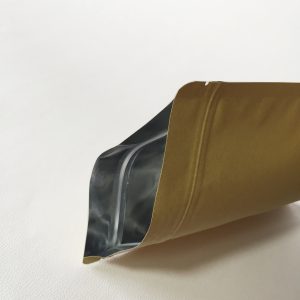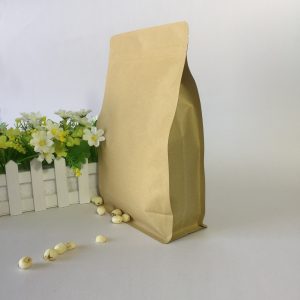The science of paper pouches involves a combination of materials science, engineering, and manufacturing techniques to create functional and sustainable packaging solutions. Here are some key aspects of the science behind paper pouches:
Material Selection: The science of paper pouches starts with the careful selection of materials. Manufacturers consider various factors, such as the type of product being packaged, the required barrier properties (moisture resistance, gas barrier, etc.), and sustainability aspects. Advanced materials, including biodegradable or compostable laminates, are used to improve the pouch’s performance and environmental impact.
Barrier Coatings: To enhance the barrier properties of paper pouches, specialized coatings are applied to the paper substrate. These coatings may include polymer films, waxes, or bio-based materials that help prevent moisture, oxygen, and other external factors from compromising the product’s quality and freshness.
Lamination Techniques: The lamination process involves combining multiple layers of materials to create a cohesive and robust structure for the paper pouch. These layers may include paper, polymer films, and adhesives. Proper lamination techniques are critical to ensure the integrity and functionality of the final pouch.
Printing and Design: Advanced printing technologies, such as flexography or digital printing, are employed to create visually appealing designs on paper pouches. The science behind printing involves precise color matching, image resolution, and ink adhesion to ensure high-quality graphics and branding.
Recyclability and Compostability: Scientists and engineers work on developing materials and coatings that are compatible with existing recycling streams or can break down naturally in composting facilities. The aim is to maximize the recyclability and compostability of paper pouches to reduce waste and promote a circular economy.
Sealing and Closure Mechanisms: The science behind sealing and closure mechanisms is crucial to ensure the pouch remains tightly sealed, preserving the product’s freshness and preventing leaks or spills. Engineers design various options, such as heat-sealing, zip-lock closures, and resealable spouts, based on the product’s specific needs.
Forming and Filling: The process of forming and filling paper pouches requires precision engineering to create consistent pouch shapes and sizes. Automated equipment is used to efficiently fill pouches with products, ensuring accuracy and minimizing waste.
Safety and Regulations: Scientists and researchers focus on meeting safety standards and regulations related to food contact materials, sustainability claims, and environmental impact. Compliance with these standards is essential for consumer safety and regulatory compliance.
Durability and Performance Testing: Rigorous testing is conducted to evaluate the durability and performance of paper pouches under various conditions, such as temperature changes, mechanical stress, and transportation scenarios. This ensures that the pouches can withstand real-world challenges without compromising their functionality.
The science behind paper pouches is continually evolving, driven by the demand for more sustainable and efficient packaging solutions. Through ongoing research, innovation, and collaboration between material scientists, engineers, and packaging experts, paper pouches continue to improve, making them a versatile and eco-friendly choice for modern packaging needs.








